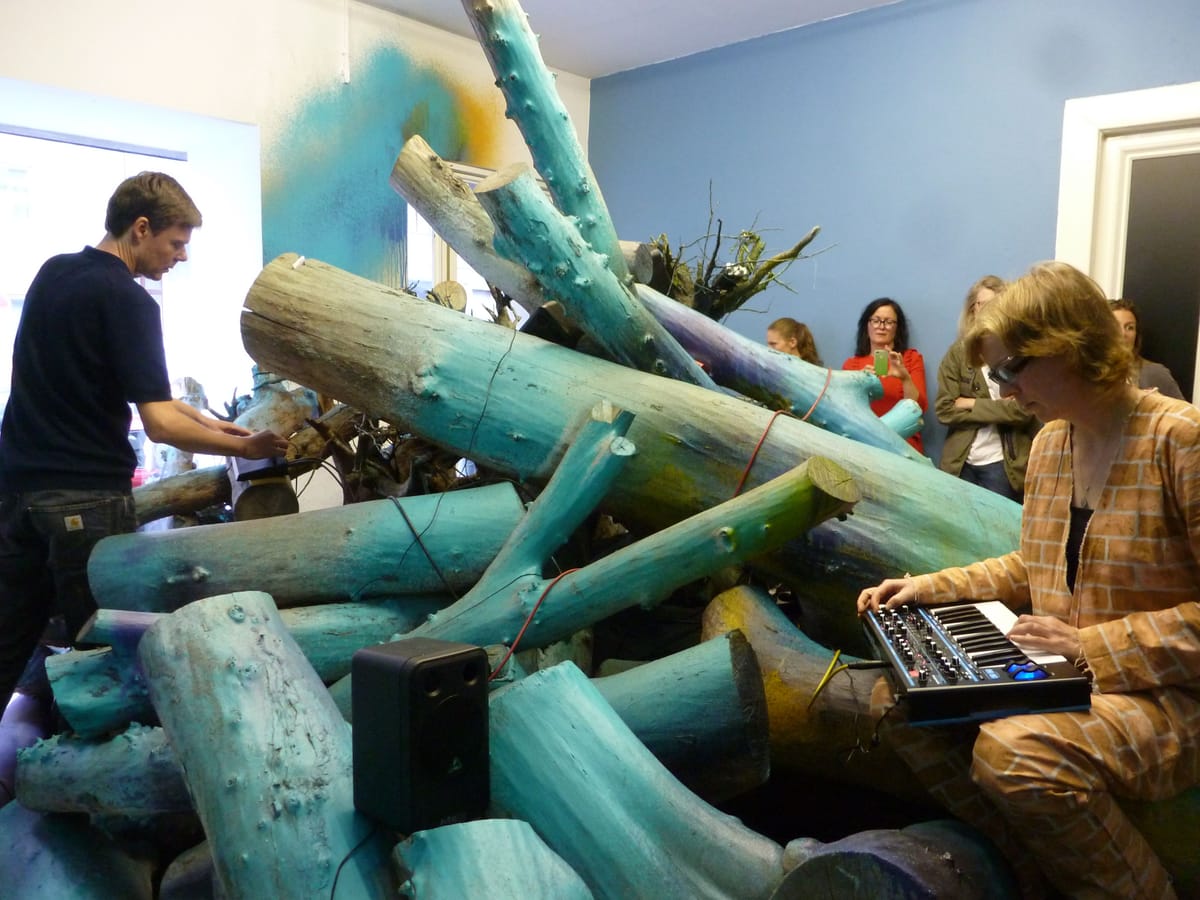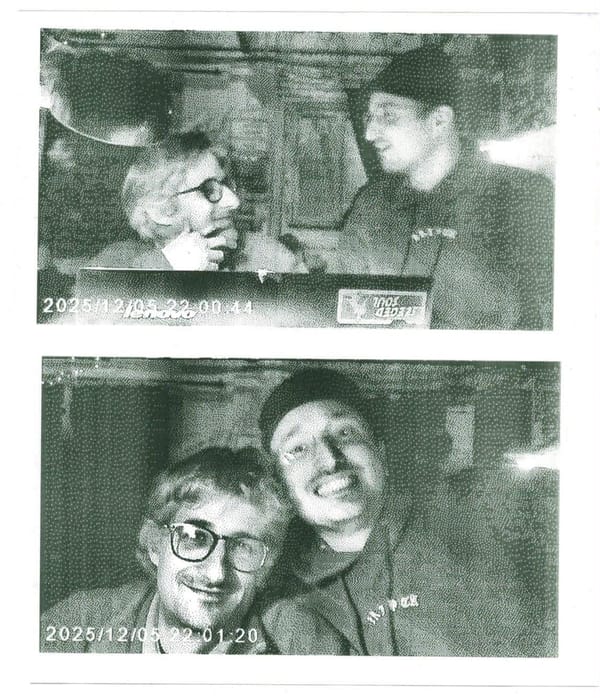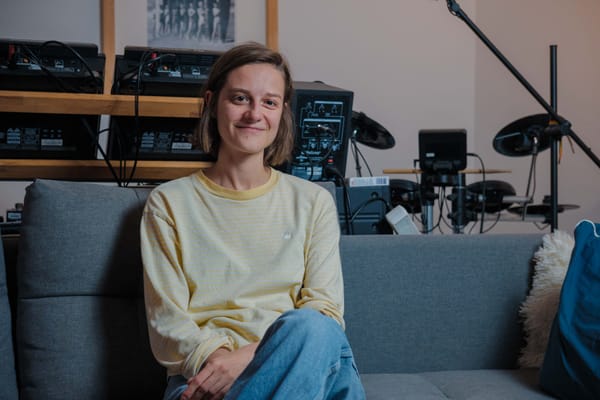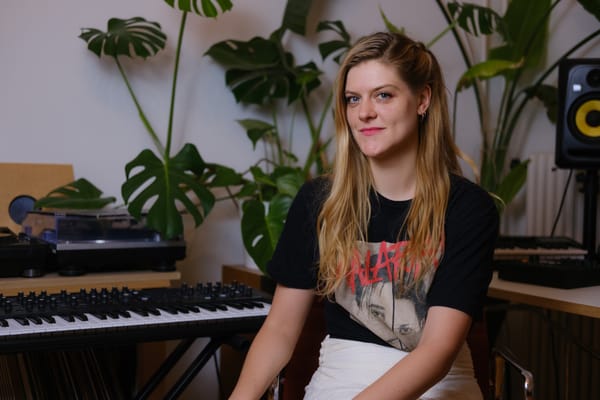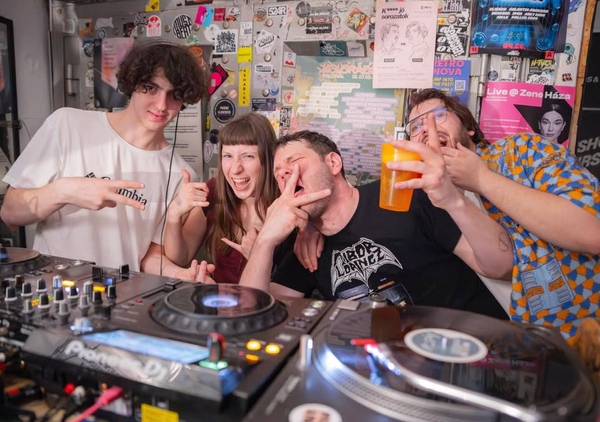Register for free to receive our newsletter, and upgrade if you want to support our work.
Stefan Schneider is a prominent figure in the contemporary Düsseldorf scene. Although this statement may sound clichéd, it accurately reflects the musician’s extensive experience.
Stefan is best known for his work with the post-rock trio To Rococo Rot, which received significant acclaim and whose music was recorded by the legendary John Peel Sessions. Following this, he joined the kraut-pop band Kreidler and has delved into various genres, including free electronica, near-jazz music and field recordings.
Stefan runs his own label, TAL, which can be described with the phrase “widely known in narrow circles”. TAL is a multi-genre international platform that promotes musicians from a diverse array of genres, cultural contexts and geographies. Starting with field recordings of traditional music from Kenya, the label has expanded to include Japanese art punk, experimental electronica, archival recordings from Venezuela and more.
Despite this diversity, TAL’s catalogue still isn’t a mosaic, but rather a curated selection that’s interesting to follow. Each release here is an unexpected twist.
I spoke to Stefan about how this “dramaturgy of releases” is constructed, about colonialism and exoticisation, and also about Germany’s regionalism in the past and the centralisation of art.
Bulat Khalilov: Tell us about the earliest stages when you got into music. What was Düsseldorf like back then? Were labels a significant phenomenon? How different was the scene from those in other German cities?
Stefan Schneider: I guess it must have been in 1976 when all of a sudden there was a song called Silver Cloud by a band named La Düsseldorf on a local radio programme. I was totally shocked that there was a band that chose the name of the city I was living in. That meant that this band must be from Düsseldorf. They must live somewhere nearby.
Before that epiphany, I never thought about the geographical locations of musicians who got played on the radio. T. Rex, Slade and David Bowie was not music from this planet. It was coming from far away to your curious ears through magical airwaves.
I listened to the radio a lot when I was a teenager. Düsseldorf used to be the headquarters of the British Rhine Army, so you had easy access to British Forces Broadcasting Service (BFBS) music programmes. It was an entertaining way to learn English. The music played felt more interesting than the stuff you’d hear on WDR (a public Radio station in Cologne). The programmes presented by John Peel were hugely important to me in particular as he always used to play different music styles in quite unconventional but cohesive combinations.
In the late 70s, when I started going out in Düsseldorf, I’d run into art students a lot who played experimental music or musicians who had something to do with fine arts. There seemed to be a very close link in Düsseldorf between fine arts and experimental music. Düsseldorf and also Cologne had a big art scene. There was the prestigious art academy in Düsseldorf, and Cologne had even more art galleries than New York back then.
I started playing music in a local punk band in 1980. Punk was the force that brought me back to life. All of a sudden, it was possible to form a band without any musical skills, but I could never really understand the No-Future aspect of punk. For me, it opened doors to the outside world. It gave me a reason to become a social person, to access people either by looking for a new drummer or rehearsal space or for someone with recording equipment.
In terms of labels in Düsseldorf, there was Atatak and Pure Freude, which also had a great record shop between 1981 and 1983. Later on, there was the fantastic but short-lived Heartbeat record shop, which was only open for one year from 1985 to 1986. A small group of young musicians gathered there, listening to new music and exchanging tapes with their newest recordings.
In 2018, I did a compilation on that scene called Sammlung - Elektronische Kassettenmusik aus Düsseldorf 1982-89.
When I grew up, all the larger cities in West Germany had a very distinctive and original music scene. Roughly speaking, Munich was the “Disco City” where the film industry was located. Hamburg was a place for Guitar Music and Rock. Wuppertal was an important place for Free Jazz. Berlin was darker and DIY. Frankfurt and Heidelberg were the region where the American Army had its headquarters. I guess that had a tremendous influence on the local music scene as well as on political underground movements. There was even a “White Panther Party” in Frankfurt formed by German students to help American GIs to escape the Vietnam War. Düsseldorf and Cologne had a lot of electronic music, which is all very well documented. All these differences don’t seem to play a big role anymore as anything can potentially come from anywhere nowadays and art is no longer so connected to certain cities.
How did you come up with the idea to start your label?
In late 2014, we decided to stop playing together with To Rococo Rot. We had been together since 1995, and after almost 20 years of travelling around the world and doing many records and music-related projects, it felt like the partnership had come to an end. At the same time in 2014, I stopped working at Schauspielhaus Düsseldorf where I was the co-curator of a series of events called Enthusiasm, which sought to bring theatre, music, fine arts and politics together. I loved doing that and it felt like a loss when we had to stop Enthusiasm with the arrival of a new artistic director.
Between 2011 and 2015, I travelled a lot to Kenya to do field recordings in different regions of the country. Mostly in the rural parts. It was part of a programme initiated by the Goethe-Institut Nairobi, and I was invited to work together with George Odhiambo, a music producer from Siaya (a region in West Kenya, near the border with Uganda). We did a lot of recordings together in Siaya, predominantly of the wonderful music of the Luo people. As these recordings came out very nicely, I was looking for a label to release them. After some so-so experiences with Honest Jons in London, I decided to go ahead and do it myself instead.
Ogoya Nengo and The Dodo Women*s Group became TAL01 in 2016. Through the release of the record, Ogoya and her band got invited a few times to go on tour in Europe. That was quite a good start for the label.
What does the name mean? How would you describe the music released under TAL in a nutshell?
First thought best thought. When I was about to start it, I was looking for a name that had no connotations with music.
Next to my former studio in Düsseldorf, there’s a road named Talstrasse that I had to cross every day. It’s kind of an in-between street but an important passage that connects different routes. Although the street is located at the very centre of the city, it feels a bit overlooked.
On your website, you state that you avoid labels like “niche” and “boutique”. What’s wrong with those tags in the context of independent music?
From the start, TAL was meant to be an international label.
Through digital files, the music released on TAL is potentially available to everyone. TAL is simply part of the world where the small and the big, the young and the old, the digital and the analogue are all in dialogue with each other.
The label is small, with limited capacities, but the music isn’t restricted only to a small group of smart connoisseurs. Moreover, the terms niche, boutique and independent seem to be categories of business thinking in the first place, and I wanted to avoid them for that reason, too.
You’ve already said that you avoid labels in music and positioning. But still, after To Rococo Rot and abstract electronic works (sound art?), how would you describe your approach to music in general?
I wouldn’t consider myself a sound artist. At least I’ve never felt part of that genre. I guess I’m totally useless for mainstream Sound Art as I was never particularly interested in working with self-built, manipulated or mistreated objects and instruments or self-programmed software. I wanted to disregard that “special effects” approach just as I don’t use any kind of visuals for my concerts.
I certainly do appreciate simplicity and directness. One concert that impressed me recently was a live set by Keiko Yamamoto from London. She’d use only two cassette players and a small array of hand-held percussion instruments. It was quite magical what she was able to do with that tiny set-up.
My approach towards electronic equipment is quite unspectacular (and therefore not attractive for Sound Art curators) as I try to get the most out of electronic instruments, which are accessible to everyone. Like a Elektron Analogrytmor a Dave Smith Evolver.
I like limitations (with respect to myself and also my equipment) and I never wanted to be able to control the music I was playing. Sometimes after my concerts, guys (boys!) come around to check out my equipment and they often seem to be quite disappointed by what they see and say things like “I have the same box, but how did you get these sounds out of it?”.
You’ve been releasing quite a lot of traditional and local music, among other sounds. What place do these releases occupy in TAL’s catalogue? How did you reach people from Kenya and Venezuela?
TAL follows its own path. From the beginning, I knew that I didn’t want to do a label that’s devoted to just one particular sound aesthetic or a certain music genre. TAL should gradually become a genre on its own. I’d like to think that, after almost 40 releases, this idea is slowly coming across to audiences.
I knew that TAL couldn’t work with a dominant graphic design language like labels such as ECM, Faitiche and Principe –as much as I like them.
Even after nine years of working with TAL, there still isn’t a proper logo for the label.
Each release is supposed to create its own identity and its particular individual language according to the concept of the music.
When I released Ogoya Nengo and the Dodo Women’s Group as the first release in 2016, I literally had no idea what catalogue number 2 would be. It was meant to be like that. I don’t follow a pre-written script and I’d rather trust things to grow gradually. One idea I had at the beginning was for TAL’s label catalogue to be as diverse as a John Peel Show, where the host mixes various sounds together so that they begin to communicate with one another.
Musica de Venezuela 1969-1981 by Oswaldo Lares is probably one of my favourite releases on TAL when it comes to the music and also the process of how it was coming together. The process was as exciting as his music.
Guillermo Lares (the son of Oswaldo Lares) works on his father’s heritage. We had met by coincidence in Berlin in 2017 at a concert by Ogoya Nengo. Guillermo introduced me to his father’s work. Oswaldo Lares’ work is remarkable for the sheer number of recordings he produced over 30 years, as well as the depth of his research as an amateur ethnomusicologist.
We spent hours listening together at Guillermo’s apartment in Berlin. It was a big honour to be allowed to put this compilation together without having ever met Oswaldo Lares in person or without having been to Venezuela myself.
When a Western label starts working with non-Western cultures, there are always questions about resource allocation, appropriation and colonialism. How do you navigate these questions?
It was quite interesting for me to hear that Oswaldo Lares had become aware of the music from Venezuela while in New York as a student of architecture. He listened to it for the first time on a local New York radio. I strongly believe that foreigners have a very special sensuality or attentiveness for music that might differ a lot from locals’ perception. For me, the best book on Japanese underground music was written by an American writer who has lived in Kyoto since the early 1980s. Dokkiri by David Kato Hopkins. I think that there are many examples of this phenomenon.
We travelled to Accra in Ghana very recently to visit the J. H. Kwabena Nketia Archive. Nketia is considered the first African ethnomusicologist who did a lot of recordings of local music in Ghana. The whole history of his work and the archive is deeply connected to the history of colonialism, which still plays a huge role in Ghana. Judith Boateng, the director of the archive, was talking about decolonising it and how important it is to make the archive accessible to young people.
When we were doing our recordings in Kenya from 2011 to 2015, we (as Europeans) had a very different perspective on music from there. It matters a lot when you’re coming there from Europe to record. You automatically become part of the history.
For instance, we were coming back from a recording trip to Siaya County in 2013 and played some of our recordings at a radio show in Nairobi. The host of that show got really serious and said: “Hey guys, we haven’t played that kind of music here for 15 years or so. How come you’re so interested in traditional music from the countryside and not so interested in contemporary music from Nairobi? Why don’t you allow Kenya to be modern?”
When we presented our work in Kenya (before the OGOYA NENGO album on TAL, we did two other albums with recordings from Kenya on Honest Jon’s in London) in Europe. People in the audience or on the panel were predominantly concerned with whether we’d paid the musicians playing on the recordings or not. All these questions need to be considered and answered when you’re doing such recordings.
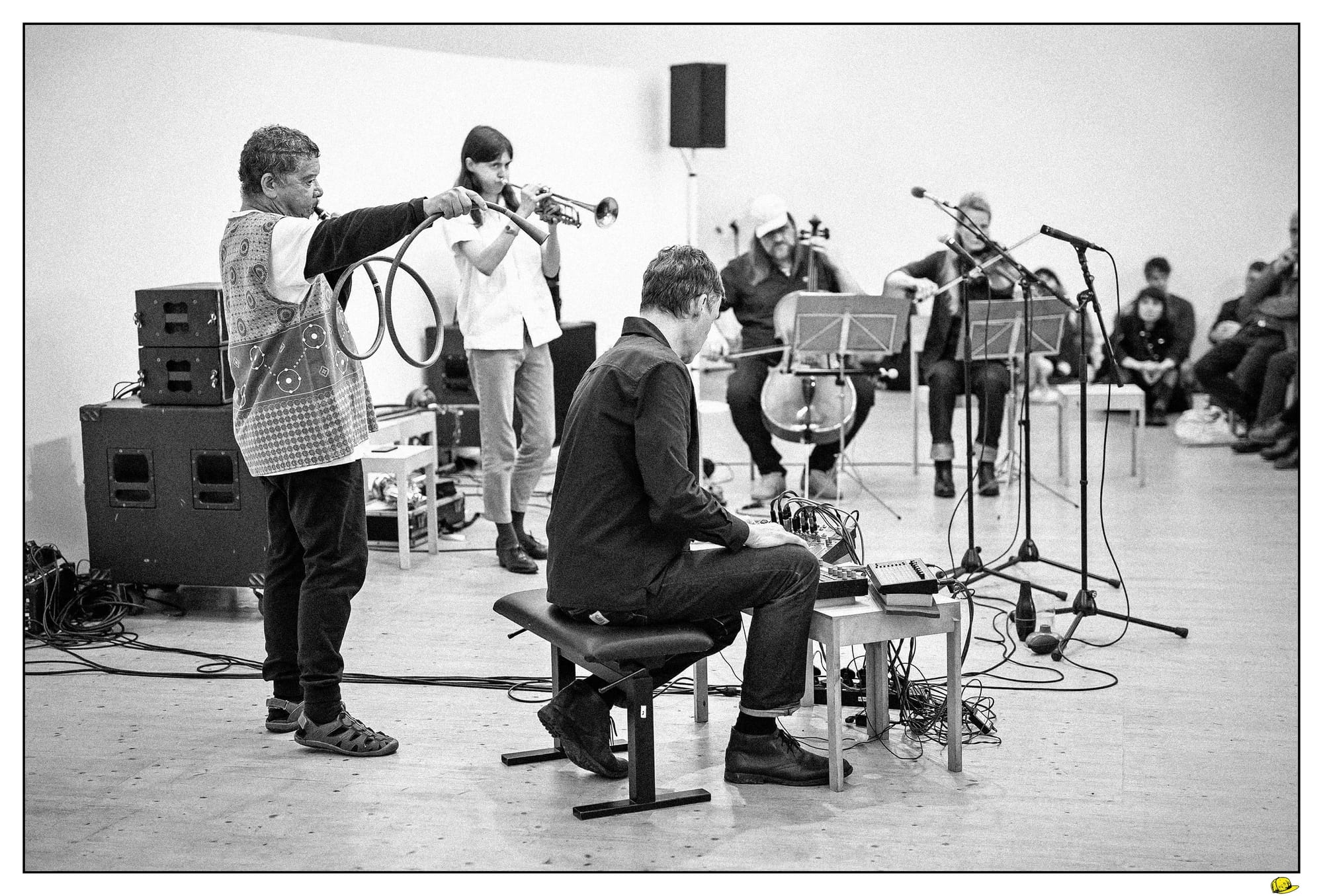
In one of our conversations, you said that it’s a bit of a pity that everyone tends to go to Berlin and it’s just overflowing with curators, artists and musicians. By contrast, other cities in Germany aren’t as saturated with cultural environments. Why is this the case, and what do you think should be done about it?
Unlike France or England, which both had very strong and pivotal capitols, Germany used to be a rather decentral place with several equally big cities, each of which had something specific in cultural terms. Around the year 2000, there was certainly a huge wave of young people who had moved to Berlin from all different parts of the world. All of a sudden, there was a unified Europe without borders and (almost) the same currency. Berlin was still cheap and many parts of the city were under construction. To foreigners, it probably came across as a big playground where you could extend your student life forever. Yes, at a certain point, perhaps in the early 2000s, it had become a cliche to be a “musician based in Berlin and Barcelona” and I resisted this as it seemed to be the new mainstream.
The real pity was that people who were key figures in the cultural life of other cities kind of disappeared after they’d moved to Berlin. For instance, fantastic activities were going on in Belgrade in the mid-2000s. When the main curator there decided to move to Berlin, Belgrade kind of vanished from the map of experimental music soon after. I guess that happened a lot. I never wanted to move. I was worried that I would hang out only with people who were doing the same things I was doing.
In a global world, things have changed quickly in the past couple of years. I think it doesn’t matter so much anymore where you’re based.
On the other hand, I can see that cities like Düsseldorf aren’t doing enough to support young artists. The art academy offers huge potential, but artists’ studios are extremely rare and expensive. Galleries in Cologne have lost their erstwhile importance, so it doesn’t come as a surprise that young artists are moving away from there.
You say that cities, which used to be centres of specific art, have ceased properly supporting young people. So it turns out that reunification and the transfer of a unified centre to Berlin isn’t a natural process, but a failing agenda of institutions?
Uf... The reunification of Germany is too big a topic here. I was just saying that the city of Düsseldorf (I mean politicians and also curators, museum directors, etc.) is constantly failing to support young artists. It would be so easy and not particularly expensive to offer better studio spaces, for instance. Also, it seems that the city isn’t aware of its immense musical heritage.
If the boundaries of global music have been erased, what place do regional, so-called folk genres have in contemporary music?
Difficult to say. When Ogoya Nengo was on tour in Europe, I went to see a number of her shows. It seemed that audiences witnessed some “purity” (hand-made wooden instruments played by hand) in the music that they seemed to be sorely missing in Western contemporary music – which to their mind had probably already been corrupted by electronic instruments.
It was quite dreadful to face those reactions as it declared (better: romanticised) the music of Ogoya Nengo to be some kind of old-fashioned regional exoticism.
How does independent/experimental music survive in Düsseldorf? Is it easy to be a musician today who doesn’t have to release hits for streaming and TikTok?
Young people keep having new ideas about what they want to listen to and how they create new sounds – digital, analogue or in live concerts, DJ sets or videos. Es wird immer weiter gehen. Musik als Träger von Ideen…
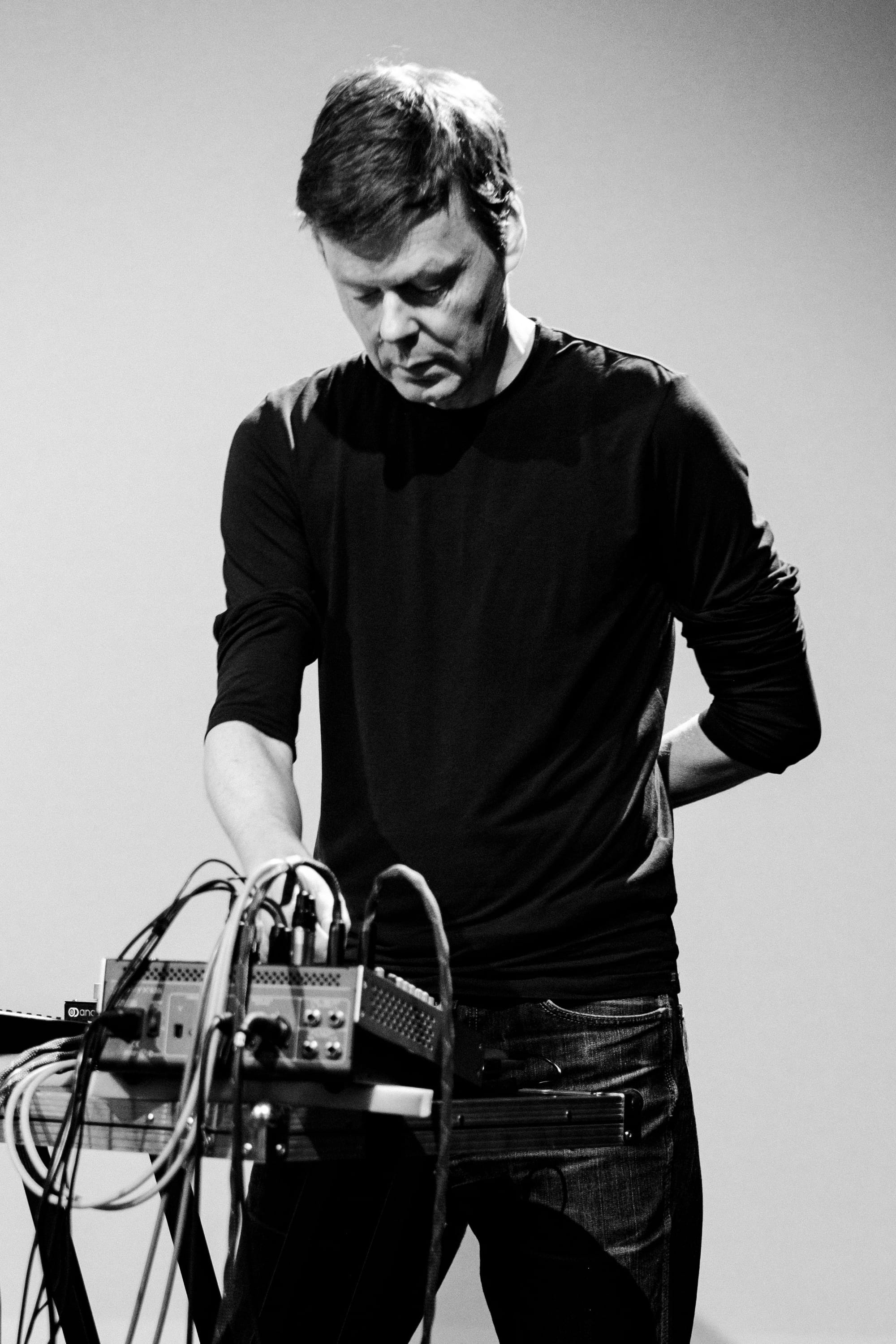
This article is brought to you by 3/4 as part of the EM GUIDE project – an initiative dedicated to empowering independent music magazines and strengthening the underground music scene in Europe. Read more about the project at emgui.de.
Funded by the European Union. Views and opinions expressed are, however, those of the author(s) only and do not necessarily reflect those of the European Union (EU) or the European Education and Culture Executive Agency (EACEA). Neither the EU nor EACEA can be held responsible for them.


